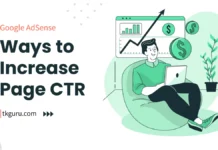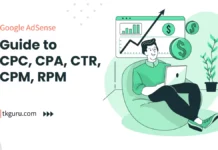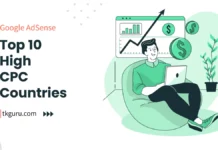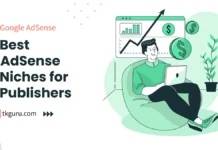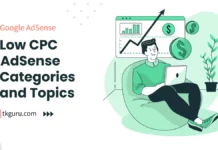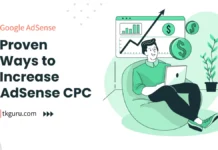Advertisements
Ratings
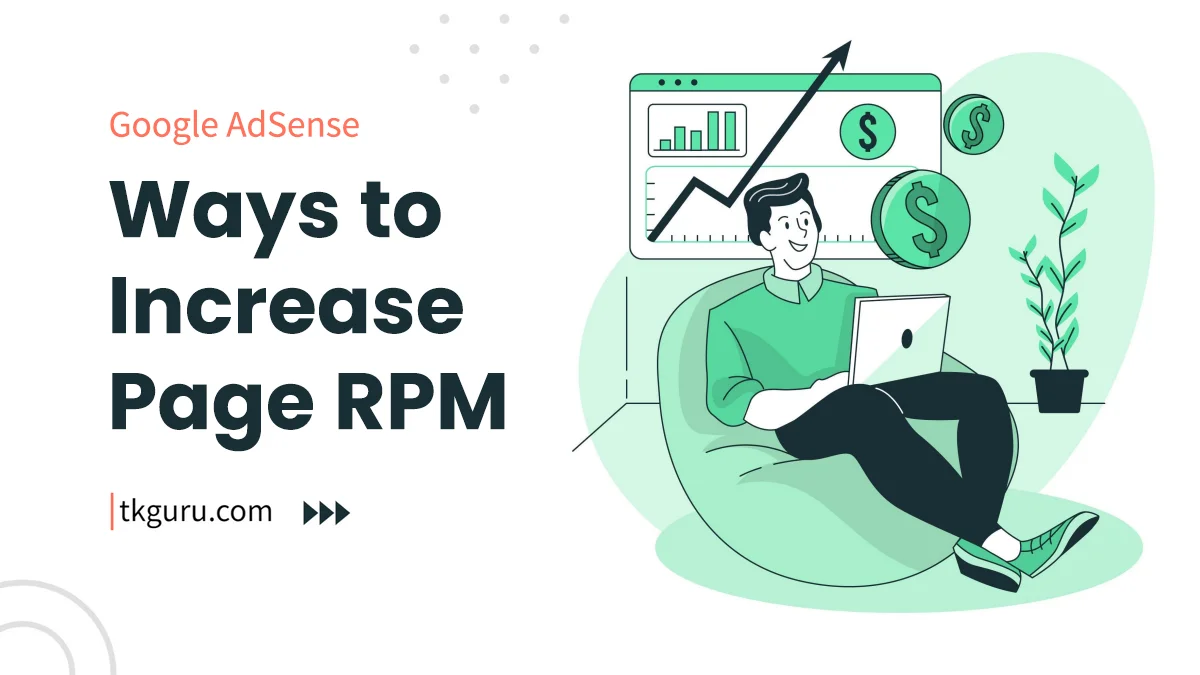
Increase Page RPM – In the world of online content creation and website monetization, understanding and optimizing your Page RPM (Revenue Per Mille) is crucial for boosting your revenue.
RPM measures how much money you can earn for every 1,000 ad impressions on your website. Increasing your Page RPM by 50% can have a significant impact on your earnings.
In this article, we’ll explore ten proven strategies to help you achieve this goal while keeping your content user-friendly and SEO-optimized.
Contents
1. Understanding Page RPM
Before diving into strategies to boost your Page RPM, let’s ensure we have a solid understanding of what Page RPM is and why it matters.
What is Page RPM?
Page RPM is a key metric that indicates how much revenue you earn per 1,000 ad impressions on your website.
It is calculated by dividing your total earnings by the total number of ad impressions, then multiplying by 1,000.
Why Does Page RPM Matter?
Page RPM matters because it directly impacts your website’s revenue. By increasing your Page RPM, you can earn more from the same amount of traffic.
It’s a crucial metric for content creators, bloggers, and website owners who rely on advertising as a source of income.
2. Ways to Increase Page RPM
2.1 Optimize Ad Placements
One of the most effective ways to boost Page RPM is by optimizing the placement of your ads. Strategic ad placement can lead to higher visibility and engagement. Here are some key ad placement strategies:
Table 1: Ad Placement Strategies
| Ad Placement | Description | Benefits |
|---|---|---|
| Above the Fold | Position ads near the top of your web page, ensuring they are visible without scrolling. | Increased visibility and higher click-through rates (CTR). |
| In-Content Ads | Place ads within the body of your content, so they appear naturally as users read your articles. | Enhanced user experience, higher engagement, and improved ad relevance. |
| Sticky Ads | Implement sticky ads that remain visible as users scroll down the page. | Extended ad exposure, especially for longer content, leading to more ad impressions and increased RPM. |
| Sidebar Widgets | Utilize widgets in your website’s sidebar to display ads in a non-intrusive manner. | Additional ad space without compromising the overall user experience. |
2.2 Diversify Ad Formats
Diversifying the types of ad formats you use on your website can significantly impact your Page RPM.
Different ad formats attract various advertisers willing to pay different rates. Here are some ad formats to consider:
Table 2: Ad Format Diversification
| Ad Format | Description | Benefits |
|---|---|---|
| Display Ads | Traditional banner or text ads that are visually prominent on your website. | Attracts a wide range of advertisers, potentially higher rates, and increased RPM. |
| Video Ads | Embedded videos or video ad units that capture user attention effectively. | Video ads often command premium rates, leading to increased RPM. |
| Native Ads | Ads that blend seamlessly with your content, appearing less intrusive to users. | Enhanced user experience and the potential for higher-paying native ad campaigns. |
| In-Feed Ads | Ads placed within content feeds or recommended articles, ensuring they look native. | Non-disruptive ad format that can lead to higher engagement and ad relevance. |
2.3 Improve Content Quality
The quality of your content can directly impact user engagement and the effectiveness of your ads.
High-quality content tends to attract more engaged users and premium advertisers. Here are strategies to improve content quality:
Table 3: Content Quality Improvement
| Content Quality Strategy | Description | Benefits |
|---|---|---|
| Better Writing | Invest in well-researched and well-written content that offers value to your audience. | Attracts engaged users and encourages longer time spent on your site, leading to more ad impressions. |
| Multimedia Elements | Incorporate visuals, videos, infographics, and interactive content to enhance user experience. | Increases user engagement and the appeal of your content, indirectly impacting ad performance. |
| Engaging Storytelling | Craft compelling narratives and stories within your content to keep readers hooked. | Keeps users on your page longer, increasing ad visibility and the likelihood of clicks. |
2.4 Audience Segmentation and Targeting
Targeting specific audience segments with tailored content and ads can significantly impact your Page RPM.
Advertisers are often willing to pay more for highly targeted impressions. Here’s how to do it:
Table 4: Audience Segmentation and Targeting
| Audience Strategy | Description | Benefits |
|---|---|---|
| Demographic Targeting | Tailor content and ads based on user demographics such as age, gender, and location. | Increases ad relevance and attracts advertisers looking for precise targeting. |
| Behavioral Targeting | Analyze user behavior and preferences to deliver personalized content and ads. | Higher engagement rates and more effective ad campaigns, often leading to increased RPM. |
| Geographic Targeting | Target users based on their geographic location to deliver location-specific ads. | Attracts local advertisers and increases the value of ad impressions. |
2.5 Utilize Header Bidding
Header bidding is an advanced monetization technique that allows multiple ad networks to bid in real-time for your ad impressions. Implementing header bidding correctly can lead to higher RPM. Here’s how it works:
Table 5: Header Bidding Benefits
| Header Bidding Benefit | Description | Benefits |
|---|---|---|
| Increased Competition | Multiple ad networks compete simultaneously, driving up ad prices and revenue. | Maximizes the value of your ad inventory, resulting in higher RPM. |
| Real-Time Bidding | Bids occur in real-time, ensuring you get the best possible rates for each impression. | Maximizes earnings by selling impressions to the highest bidder at any given moment. |
| Improved Fill Rates | Header bidding often leads to higher fill rates, reducing the number of unsold impressions. | Reduces ad inventory wastage and optimizes revenue generation. |
2.6 A/B Testing
A/B testing involves comparing different variations of your website or ad configurations to determine what works best.
Implementing A/B testing can help you identify the most effective ad placements, formats, and content strategies.
Table 6: A/B Testing Benefits
| A/B Testing Benefit | Description | Benefits |
|---|---|---|
| Data-Driven Decisions | A/B testing provides actionable data on what works and what doesn’t, allowing for informed decisions. | Optimizes ad placement, content strategies, and user experience, leading to higher RPM. |
| Continuous Improvement | Ongoing A/B testing ensures that your website and ads evolve with changing user behavior and trends. | Keeps your website and ad strategies competitive, resulting in sustained RPM growth. |
| Improved User Experience | A/B testing often leads to better user experiences, indirectly impacting ad engagement and RPM. | Enhanced user engagement and satisfaction can lead to more ad impressions and clicks. |
2.7 Optimize Page Load Speed
Page load speed plays a critical role in both user experience and ad performance. Faster-loading pages tend to keep users engaged and increase ad impressions. Here’s how to optimize your website’s speed:
Table 7: Page Load Speed Optimization
| Speed Optimization Strategy | Description | Benefits |
|---|---|---|
| Image Optimization | Compress and optimize images to reduce their file size, decreasing page load times. | Faster-loading pages lead to improved user engagement and more ad impressions. |
| Content Delivery Networks | Utilize CDNs to distribute your content across multiple servers, reducing server response times. | Faster content delivery, especially for global audiences, leads to better user experiences. |
| Minimize HTTP Requests | Reduce the number of requests your website makes to the server, optimizing load times. | Fewer requests mean quicker page loading, enhancing user experience and ad performance. |
2.8 Mobile Optimization
With the growing use of mobile devices, optimizing your website for mobile is essential for increasing Page RPM.
Mobile-friendly websites and ad placements can lead to higher engagement and more ad impressions.
Table 8: Mobile Optimization Strategies
| Mobile Optimization Strategy | Description | Benefits |
|---|---|---|
| Responsive Design | Ensure your website is responsive and adapts seamlessly to different screen sizes and devices. | Better user experience, leading to increased mobile engagement and more ad impressions. |
| Mobile-Friendly Ad Units | Use ad units specifically designed for mobile devices, ensuring they display correctly and attractively. | Enhanced ad visibility and engagement on mobile, driving up RPM. |
| Address Mobile Ad Blockers | Implement strategies to counter mobile ad blockers and ensure your ads are seen by your audience. | Overcoming ad blockers leads to more ad impressions and potentially higher RPM. |
2.9 Leverage Data Analytics
Data analytics is your key to understanding user behavior, ad performance, and RPM trends. By harnessing data effectively, you can make informed decisions to boost Page RPM.
Table 9: Data Analytics Strategies
| Data Analytics Strategy | Description | Benefits |
|---|---|---|
| Regular Data Monitoring | Continuously track RPM data, user behavior, and ad performance to identify trends and opportunities. | Informed decision-making and the ability to adapt strategies for sustained RPM growth. |
| User Behavior Analysis | Analyze how users interact with your website, focusing on which pages generate the most revenue. | Optimizes content placement, ad strategies, and user experience for increased RPM. |
| Performance Attribution | Understand how different metrics (e.g., CTR, session duration) contribute to overall RPM performance. | Identifies which areas to prioritize for optimization based on their impact on RPM. |
Conclusion
In conclusion, increasing your Page RPM by 50% is an achievable goal with the right strategies and a commitment to providing a great user experience.
By optimizing ad placements, diversifying ad formats, improving content quality, targeting specific audiences, utilizing header bidding, A/B testing, optimizing page load speed, embracing mobile optimization, leveraging data analytics, and implementing these proven methods, you can significantly boost your revenue without compromising the user experience.
Keep in mind that Page RPM optimization is an ongoing process, and regularly monitoring your RPM performance will help you adapt to changing trends and ensure continued success in monetizing your content and website. Start implementing these strategies today, and watch your Page RPM soar.
Ways to Increase Page RPM FAQs
What is Page RPM, and why is it important for website monetization?
Page RPM (Revenue Per Mille) represents the estimated earnings a publisher can generate for every 1,000 page views on their website.
It's a vital metric for website monetization as it quantifies the revenue potential of your content and helps you assess the effectiveness of your monetization strategies.
How can I increase Page RPM for my website?
To boost Page RPM, consider the following strategies:
- High-Quality Content: Create valuable and engaging content to attract more visitors.
- Ad Placement: Optimize ad placement for better visibility without compromising user experience.
- Ad Formats: Experiment with different ad formats like display ads, native ads, and video ads.
- Ad Networks: Work with reputable ad networks and demand partners to access high-paying ads.
- User Experience: Improve website load times and mobile optimization to reduce bounce rates.
- A/B Testing: Conduct A/B tests to optimize ad layouts, sizes, and types.
- Audience Targeting: Use audience targeting to display more relevant ads to your visitors.
- Diversify Revenue Streams: Explore affiliate marketing, sponsored content, and other monetization options.
Is there an ideal balance between ads and content to maximize Page RPM?
The ideal balance between ads and content varies depending on your website and audience.
It's essential to strike a balance that ensures a positive user experience while maximizing revenue.
Conduct A/B tests to find the optimal ad placement and density for your specific audience.
Can audience segmentation help increase Page RPM?
Yes, audience segmentation can boost Page RPM. By segmenting your audience based on demographics, interests, and behavior, you can deliver more relevant ads to specific user groups, increasing the likelihood of clicks and conversions.
What role does website speed play in Page RPM optimization?
Website speed is crucial for Page RPM optimization. Slow-loading pages can lead to higher bounce rates and decreased user engagement, negatively impacting RPM.
Ensure your website is optimized for speed by compressing images, reducing unnecessary scripts, and using content delivery networks (CDNs) to improve load times and user experience.
| Web Hosting | Website |
| WordPress | Google Adsense |
| SEO | Affiliate Marketing |
| Blogging | YouTube |
Recent Posts
- 9 Proven Ways to Increase Page CTR by 50%
- 9 Proven Ways to Increase Page RPM by 50%
- A Detailed Guide to CPC, CPA, CTR, CPM, RPM
- Top 10 High CPC Countries: Maximizing Ad Revenue in Lucrative Markets
Related Tags

